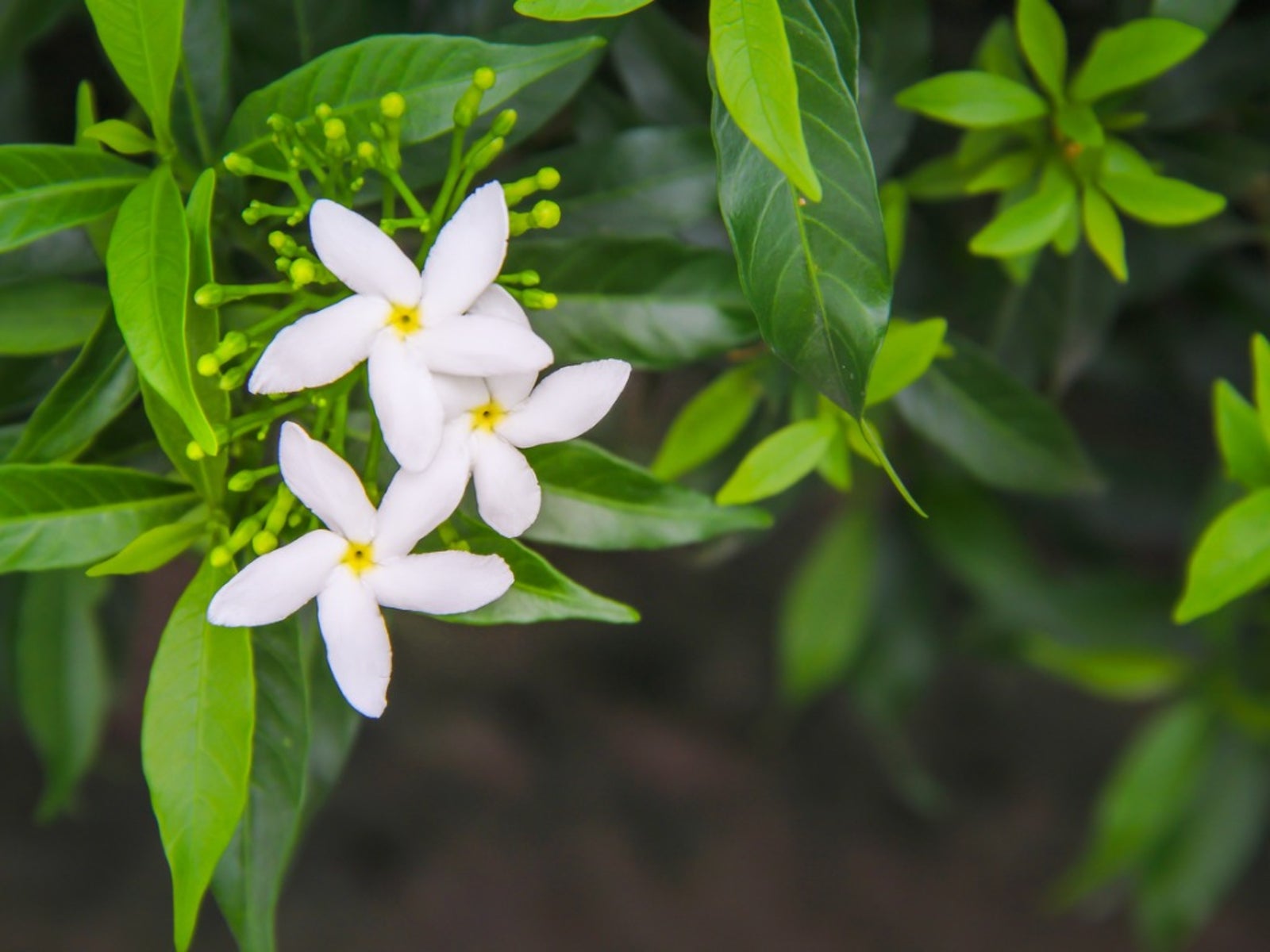Have you ever wondered what it truly takes to make your garden burst with the intoxicating aroma of jasmine? It's almost as if there are hidden whispers, tiny secrets about this beloved plant that not everyone knows. Today, we are going to talk about the "jasmine leak," a special collection of insights that can really help your green space flourish with these beautiful, scented blossoms. This isn't about some kind of scandal, but rather a gentle uncovering of how to best care for a plant that brings so much joy and fragrance into our lives.
For many, the very idea of a jasmine plant conjures up images of warm evenings, with a sweet, almost heady scent drifting through the air. It’s a plant cherished around the globe, known for its delicate appearance and powerful perfume. Getting it to thrive, though, can sometimes feel like a puzzle. You might wonder, for instance, what exactly makes some jasmine plants so incredibly vigorous and fragrant, while others seem a bit shy?
Well, we are about to share some key details, a bit of a "leak" if you will, on cultivating this plant. This information comes straight from the heart of what makes jasmine so special, drawing on what makes it such a sought-after addition to any garden or even a container. So, prepare to learn some truly helpful tips that could change your jasmine growing experience for the better.
Table of Contents
- Introduction to Jasmine: More Than Just a Scent
- Why the "Jasmine Leak" Matters to Your Garden
- Cultivating Secrets: The Real Jasmine Leak
- Common Questions About Jasmine
- Embracing the Fragrance: Your Jasmine Journey
Introduction to Jasmine: More Than Just a Scent
Jasmine, a truly enchanting plant, is famous the world over, very much for its unique tropical smell and its lovely blossoms. It’s a vining shrub, typically, that has a remarkably appealing, very fragrant smell. This plant, you know, produces clusters of three to five white flowers, often from late summer right into early fall. The scent, it’s just something else; few plants, it seems, have a fragrance quite as intoxicating as jasmine.
This white, vining flower is, honestly, best known for its incredible fragrance. The heady scent of flowering jasmine in your garden only needs you to know how to plant and care for it properly. It's a perennial vine or shrub, beloved for its sweet scent, and it really is a plant that draws people in. You simply cannot come across a jasmine flower and not take a moment to catch a whiff of its sweet floral fragrance. It's a rather delightful experience, actually.
Delicate and dainty, with small flowers, jasmine is known around the world for its unique tropical smell and pretty blossoms that, incidentally, attract bees. The jasmine flower is usually white, though some types might show other colors. These plants are, typically, native to tropical areas and even some temperate regions, making them adaptable in a way to various climates. We are going to explore what you need to know to grow jasmine, from its basic needs to some deeper insights.
Why the "Jasmine Leak" Matters to Your Garden
The term "jasmine leak" here isn't about some kind of malfunction, not at all. Instead, it points to revealing those little-known facts and practical tips that can truly make a difference in how your jasmine grows and smells. It’s about getting the inside scoop, the kind of advice that helps you move beyond just keeping the plant alive to helping it truly flourish. Many gardeners, you know, find themselves wondering why their jasmine isn't as fragrant or as full as they imagine it could be.
This "leak" is, essentially, a collection of insights into the plant's preferences, its little quirks, and the best ways to encourage those beautiful, sweet-smelling flowers. It’s about learning everything you need to know to grow jasmine, a plant that can be either a perennial vine or a shrub, cherished for its sweet scent. When you understand these deeper aspects, you can provide the exact care it needs, and that, honestly, makes all the difference.
Think of it as getting access to a secret gardening notebook, filled with observations and successful strategies for this particular plant. It’s about making sure your jasmine doesn't just survive, but truly thrives, filling your garden with that unmistakable, delightful aroma. This is what we mean by the "jasmine leak" – a sharing of valuable knowledge to help you succeed with this amazing plant. It's really about giving you the tools to create that perfect fragrant space.
Cultivating Secrets: The Real Jasmine Leak
Light, Water, and Soil: The Foundation
One of the most important "leaks" about growing jasmine is understanding its basic needs for light, water, and soil. These three elements are, simply put, the bedrock of a healthy plant. Jasmine generally loves bright, sunny spots. It really thrives when it gets plenty of sunlight, ideally six hours or more each day. Too little light, and you might find your plant produces fewer flowers, and the scent might not be as strong. So, picking the right location is pretty key, you know.
When it comes to water, jasmine prefers consistent moisture, but it doesn't like to sit in soggy soil. It’s a bit like us; it needs regular drinks but not to be swimming. The soil should feel moist to the touch but not waterlogged. You might want to check the soil a few inches down before watering again. Overwatering can lead to root problems, which is something we definitely want to avoid for a healthy plant. Underwatering, on the other hand, can make the plant look stressed and droopy, so finding that balance is quite important.
The soil itself also plays a big part. Jasmine prefers well-draining soil that is rich in organic matter. A good mix will allow water to pass through without pooling, while still holding onto enough moisture for the roots. You can, for instance, amend your garden soil with compost or other organic materials to improve its texture and nutrient content. This provides a really good home for the roots to spread out and take hold. Find tips on light, water, soil, and common jasmine varieties, as these are very much the building blocks for success.
Providing Support for a Climbing Beauty
Another valuable "leak" for growing jasmine, especially the vining types, is providing the right kind of support. Since many jasmine varieties are vining plants, they naturally want to climb and spread. If you want to use it as a flowering vine, you really must give it something to grow on. This could be a trellis, an arbor, a fence, or even another sturdy plant or structure. Without support, the vines can become tangled and messy, and the plant might not display its full beauty.
Guiding the vines early on is a pretty good idea. As the plant grows, you can gently weave its new shoots through the support structure. This encourages it to grow upwards and outwards in a controlled, attractive way. It also helps with air circulation around the plant, which can prevent some common plant issues. A well-supported jasmine vine, you know, will look fuller and produce more flowers because its energy is directed into growth rather than just sprawling on the ground.
Think about how the plant will grow over time and choose a support that can handle its eventual size and weight. Some jasmine varieties can grow quite large, so a sturdy support is really important for long-term success. This thoughtful approach to support is, basically, one of those "leaks" that can transform your jasmine from a simple plant into a truly spectacular garden feature. It’s about helping the plant express its natural tendencies in the best possible way.
Exploring Different Types and Varieties
The "jasmine leak" also includes knowing that "jasmine" isn't just one plant; there are, in fact, many different types, each with its own characteristics. Some are true jasmines (Jasminum), while others might be called jasmine but belong to different plant families, though they share that wonderful fragrance. Learning about all the different types of jasmine can really help you add a beautiful flowering shrub to your garden that fits your specific climate and preferences. This knowledge is pretty powerful, you know.
For instance, common jasmine (Jasminum officinale) is very popular for its strong scent and vigorous growth. Winter jasmine (Jasminum nudiflorum), on the other hand, blooms in winter, offering a splash of color when most other plants are dormant. Star jasmine (Trachelospermum jasminoides) is another favorite, known for its glossy leaves and star-shaped flowers, though it’s not a true jasmine botanically. Each type has its own particular needs and growing habits, so choosing the right one for your space is quite important.
Understanding these varieties is a key part of the "jasmine leak" because it helps you pick a plant that will genuinely thrive in your garden’s conditions. Some might prefer more sun, others a bit more shade; some are hardier in colder temperatures, while others need a warmer climate. You know, knowing these distinctions means you can make a really informed choice, ensuring your efforts lead to a truly successful and fragrant display. Learn how to grow and care for this plant with the old farmer's almanac growing guide, as it often provides details on specific types.
Common Questions About Jasmine
Many people have questions when they start growing jasmine, and these inquiries often touch upon the very "leaks" we're discussing. Here are a few common ones, with some direct answers to help you along:
How do I make my jasmine plant smell stronger?
To get a stronger scent from your jasmine, it's very important to provide it with plenty of sunlight. Most jasmine varieties really need at least six hours of direct sun each day to produce their most fragrant flowers. Also, ensuring the plant is healthy and well-fed with appropriate nutrients can help. A happy, vigorous plant, you know, will generally produce more blooms, and thus, more of that wonderful smell. Proper watering and good air circulation also play a role in overall plant health and bloom quality.
When is the best time to plant jasmine?
The best time to plant jasmine typically depends on your local climate. In most regions, planting in spring or early fall is ideal. This allows the plant to establish its root system before the extreme heat of summer or the cold of winter sets in. If you are in a very warm, tropical area, you might have more flexibility, but generally, avoiding the hottest or coldest parts of the year for planting is a good idea. This gives the plant the best start, basically, to get settled.
Can jasmine grow in a pot or container?
Yes, many types of jasmine can absolutely grow very well in pots or containers, especially if you have limited garden space or live in a colder climate where you might need to bring the plant indoors during winter. When growing in a container, it's important to choose a pot with good drainage holes and use a high-quality potting mix. Container-grown jasmine might need more frequent watering and feeding than those in the ground, as the soil can dry out faster. It’s a good way, you know, to enjoy its fragrance on a patio or balcony.
Embracing the Fragrance: Your Jasmine Journey
So, there you have it – the "jasmine leak" revealed! It’s really about understanding the core needs of this amazing plant, from its love for sunlight and well-drained soil to the importance of providing support for its climbing habits. By paying attention to these details, you can unlock the full potential of your jasmine, allowing it to truly flourish and fill your surroundings with its unforgettable, sweet scent. This plant, with its delicate and dainty flowers, is a joy to grow, and knowing these insights makes the experience even more rewarding.
Remember, the heady fragrance of flowering jasmine in your garden only requires knowing how to plant and care for it with a little bit of informed effort. It’s a perennial vine or shrub, and with the right approach, it can become a true highlight of your outdoor space. Learn everything you need to know to grow jasmine, a perennial vine or shrub beloved for its sweet scent, and you will be well on your way to enjoying its beauty. This is, you know, a plant that gives back so much for the care you provide.
Ready to put these "leaks" into practice and transform your garden into a fragrant paradise? We encourage you to start your own jasmine growing journey today. You can learn more about growing fragrant plants on our site, and for even more specific tips, link to this page our detailed jasmine growing guide. For further reading, consider exploring resources like The Old Farmer's Almanac, which provides extensive information on plant care. Happy gardening!



